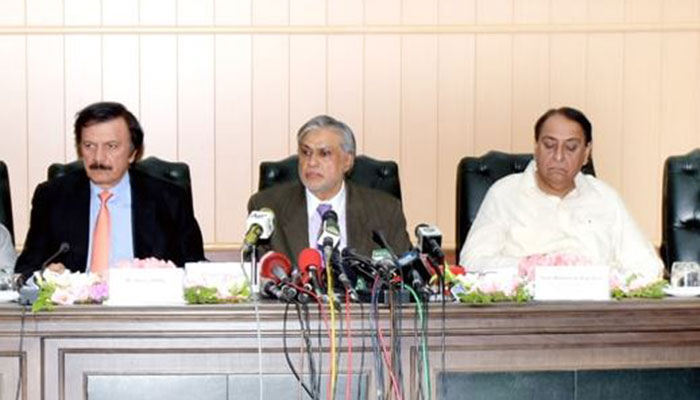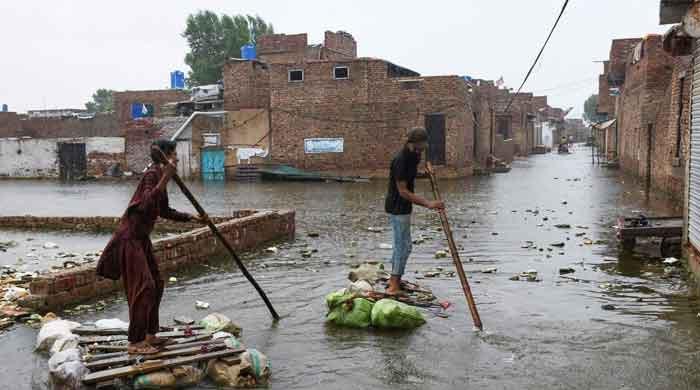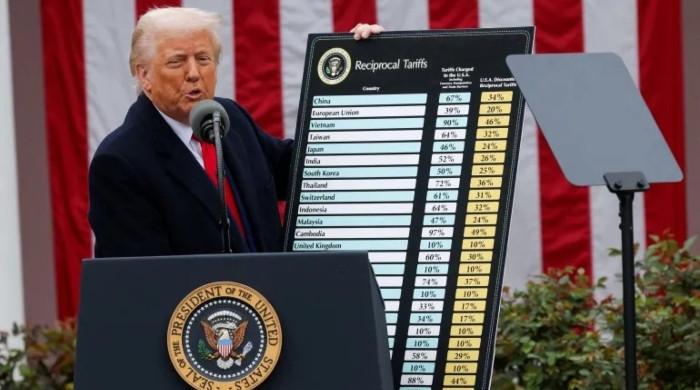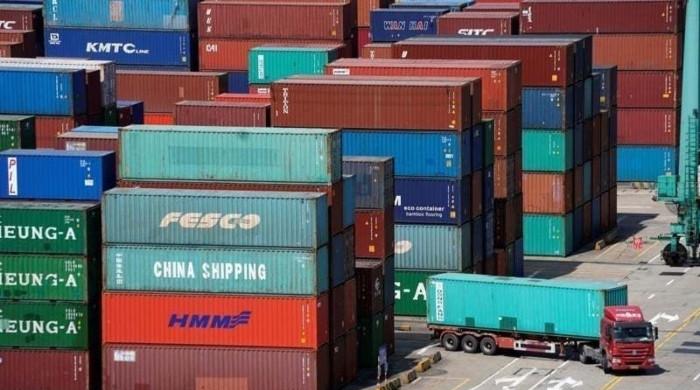Mr Dar’s press conference
After a hiatus of nearly three months, the finance minister, Senator Ishaq Dar appeared on a public platform on October 16 and held a press conference, extensively reflecting on the state of...
October 24, 2017

After a hiatus of nearly three months, the finance minister, Senator Ishaq Dar appeared on a public platform on October 16 and held a press conference, extensively reflecting on the state of the economy.
It was a brave act – looking a mere shadow of his past, visibly distraught and yet mentally alert sans the usual cockiness. To many an embarrassing question, including demands for his resignation, his response was poised and deft, notwithstanding the fact that some have not considered his reasons persuasive. The event must have eased the raw nerves of markets and players alike, who did not know who was running the show.
How far he has succeeded in allaying the mounting apprehensions about the state of the economy is something only time will determine. However, so long as he is holding public office, no matter how challenging his personal tribulations may be, it is incumbent on him to fulfil the normal responsibilities of his office, including occasional, if not frequent, interaction with the press. During his long absence, the economy was akin to a ship in the high-seas without a captain. And, what’s worse, the ship was adrift, badly needing course-correction and steadying.
Senator Dar asserted that despite challenges, economic gains made in the past remain intact and that Pakistan needed to build on those. However, he largely focused on proving that the economy was facing poorer conditions four years ago compared to its present state. In our view, this is like looking in the rear-view mirror and ignoring what is lying ahead. Of course, the economy has made significant advances in the last four years but unfortunately that success story is losing its lustre, traction, steam and direction under the watch of its own chief architect.
His basic premises were that the performance in the first quarter of current fiscal year (Q-1: 2017-18) was encouraging; there is a revival of exports coupled with slow-down in imports, growth is projected to increase to 6 percent, inflation remains low with stable policy rate; private-sector credit has been record high; public debt, particularly external debt, is not problematic; and, reserves are adequate.
There are two important areas where we find it difficult to share the optimism expressed by the finance minister. Indeed, these areas are the key to the health of the economy. In this space, we have been arguing that fiscal and external account deficits are unravelling the recent gains. The emphasis on these aspects was missing and their severity not fully appreciated.
Let’s consider the Q-1 performance. The Q-1 fiscal deficit was Rs324 billion or 0.9 percent of GDP as against 1.3 percent in the Q-1 of last year. Given the target of 4.1 percent for the year, this deficit is fine. In a previous article, we had estimated the deficit to 1.7 percent, based on the SBP data on credit to government for budgetary purpose as on Sep 22, 2017. We also added estimated borrowings from national savings and external sources (since full information available in November). The SBP data for the weeks ending Sep 29, 2017 and October 6, 2017 is now available. Unfortunately, the successive dates are giving much higher figures of deficit compared to what the finance minister was told for the press conference. On Sep 29, 2017, bank financing was Rs460 billion (compared to Rs420 billion for Sep 22, 2017) and on October 6, 2017, it was Rs514 billion.
Using the figure for Sep 29, 2017 (of Rs460 billion, not including borrowings through national savings and from external sources) we see a vast difference (Rs136 billion) from the reported deficit of Rs324 billion. And, the trend is continuing, as Rs514 billion were borrowed until October 6, 2017, 45 percent higher compared to the same period last year. We are, therefore, constrained to conclude that the fiscal deficit is out of bound and that it is producing adverse consequences for the economy.
On the external account, the finance minister has brushed aside concerns on the falling level of reserves, and has considered the present level of about $18 billion as adequate. This assertion is not tenable. If it were so, why did he and his team expended strenuous efforts to accumulate reserves and held the trophy for raising them to an unprecedented level of $24.5 billion in October last year? Denial of a problem is the first step toward inaction and letting the symptoms fester. With new balance of payment data just released by the SBP, here is the Q-1 picture of balance of payments (BOP) that is for everyone to see:
First, despite a much-needed improvement in exports (fob value) of 12 percent, imports remained exceptionally high, rising by a whopping 25 percent from an already elevated level. Second, the current account deficit worsened by 127 percent, rising from $1367 million in Q-1 last year to $3557 million in Q-1 this year. Third, to finance this deficit net external financing only $1411 million (adding another at least Rs141 billion to fiscal deficit) was available, leaving a gap of $2146 million. Finally, this gap was filled in using what is now an all-too-familiar way – the drawing down of the reserves. Thus, the country lost another Rs2.146 billion just in the first quarter of the fiscal year. Even at this rate, though it’s likely to accelerate given the fiscal trends, the reserves would fall to nearly the same level that the PML-N government inherited back in 2013, but of course with a significantly larger external debt burden.
This is a grim picture, not in accord with the optimism of the press conference. Little room is left to avoid outside help, notwithstanding the government’s ostensible declaration to the contrary. To avert this possibility, we must arrest the drift by decisively putting a lid on fiscal deficit and putting an end to the use of reserves for defending an over-valued exchange rate and subsidising imports in the process.
The writer is a former finance secretary.
Email: [email protected]
This article was originally published in The News











